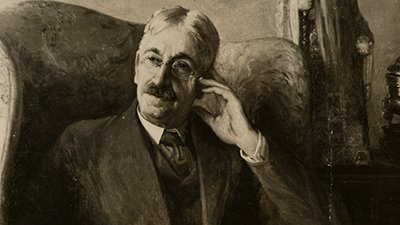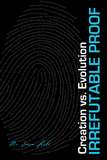
Evolution in American Education and the Demise of Its Public School System
Early American writings that show that the public schools of today are quite different from the public schools of yesteryear.
“It being one chief project of the old deluder, Satan, to keep men from the knowledge of the Scriptures … it is therefore ordered … [to] appoint one within their town to teach all such children as shall resort to him to write and read … ”1
Imagine today’s public schools in America having as their goal to teach children to read the Bible. Believe it or not, that quote is from the first public school law ever passed in America, the “Old Deluder Satan Act” of 1647. This was just the first of many early American writings that show that the public schools of today are quite different from the public schools of yesteryear.
Firm Foundations
On into the colonial and founding periods of American history (early 1600s to the late 1700s), Christianity, the Bible and creation were taught openly in public schools, and incorporated throughout the various topics of education. For example, in a 1749 booklet on education, Benjamin Franklin said the teaching of history in schools should “afford frequent opportunities of showing the necessity of a public religion … and the excellency of the Christian religion above all others.”2
When the use of the Bible was threatened to be diminished by an abundance of new textbooks available around 1800, prominent American educators spoke up to ensure the Bible’s place as America’s premier textbook. Fisher Ames, an educator and prominent statesman, said, “[I]f these [new] books … must be retained, as they will be, should not the Bible regain the place it once held as a school book?”3 In a widely distributed pamphlet, Benjamin Rush (the “father of public schools under the Constitution” as well as a signer of America’s Declaration of Independence) argued from reason and revelation for the continued use of the Bible as a schoolbook.4
Even Thomas Jefferson was involved in religious aspects of education, for while US president, he made the Bible a primary reading text for Washington, D.C., schools.5
Noah Webster, one of the greatest of American educators, wrote an appendix to his 1832 school history text reminding students of the importance of the Scriptures, and warned that “miseries and evils” result from a lack of following the Bible.6 In 1844 the US Supreme Court ruled that a college could not be built that excluded teachings from the Bible.7 In fact, it was lawyer and senator, Daniel Webster, the famous “defender of the Constitution,” who argued before the Supreme Court that Christianity is inseparable from education.7
Down the Slippery Slope
Obviously, teaching a full-fledged atheistic theory, like evolution (although evolutionary ideas were being considered in America and Europe even before the release of Darwin's 1859 Origin of Species book), would have been out of the question in early America. But gradually, the first “stretching” of the Bible was done in American school science curricula in the 1840s. “Old earth” opinions from the European scientific community led many American writers to advance long-age views of geology in school textbooks. However, even when this was done, most writers made the extra effort to harmonize the long time periods with the biblical account of creation (taking either the gap theory or day-age approach).8 The Bible was still applicable to all subjects, but now it was not to be taken literally in all cases.
With the popularization of biological macroevolution by Darwin’s Origin of Species, American textbook authors had mixed responses. Some accepted Darwin’s hypothesis readily; others rejected it outright.
According to historian Edward Larson,
-
in 1860, famed geologist Edward Hitchcock added a section to his Elementary Geology decrying the notion that mankind came from “a mere mass of jelly.”8
-
botanist Asa Gray initially stuck to creation, but in later editions of his textbook dropped earlier creationist affirmations.9
-
by the 1890s and 1900s, evolution was thoroughly embedded in the science curricula and treated as fact.10
-
even teachers’ journals reminded educators not to neglect teaching evolution.10
-
fewer attempts to include the Bible were made in the new books, and authors did not even try to reconcile it with the popular new theory.11
One of the topics taught in the name of modern science included open justifications of racism, which could now be easily explained in terms of human evolutionary development.12 Take for example George W. Hunter’s Civic Biology (1914), which stated:
“Although anatomically there is a greater difference between the lowest type of monkey and the highest type of ape than there is between the highest type of ape and the lowest savage, yet there is an immense mental gap between monkey and man … . At the present time there exist upon the earth five races or varieties of man, each very different from the others in instincts, social customs, and, to an extent, in structure. These are the Ethiopian or negro type, originating in Africa; the Malay or brown race, from the islands of the Pacific; the American Indian; the Mongolian or yellow race, including the natives of China, Japan and the Eskimos; and finally, the highest type of all, the Caucasians, represented by the civilized white inhabitants of Europe and America.”13
Hunter’s suggested eugenics program is even more shocking: “ … if such people were lower animals, we would probably kill them off to prevent them from spreading. Humanity will not allow this, but we do have the remedy of separating the sexes in asylums or other places and in various ways of preventing intermarriage and the possibilities of perpetuating such a low and degenerate race. Remedies of this sort have been tried successfully in Europe and are now meeting with success in this country.”14 Hunter’s Civic Biology actually was one of the most popular textbooks in use nationwide by the 1920s, which makes its contents all the more significant.15
American science education had fully accepted evolution and all that came with it, and rejected the last vestiges of the biblical account of origins. The science curriculum was now contributing to the decay of the public schools.16
The Schools and the Courts, Round 1
But the American nation was largely conservative Christian, and even President Theodore Roosevelt believed that “spiritual and moral training” was the most important part of American education.17 Why then was there no outcry against the new, exalted status of evolution by the Christians of America? It was because the topic of evolution was almost exclusively limited to secondary schools (high schools), and a mere 3.8 percent of Americans between 14 and 17 years of age attended school in 1890.18 That began to change as the twentieth century progressed, with the number of high school students doubling every decade up to 1920.19 With a larger portion of the American 14–17 population attending high schools, public awareness of the prominent position of evolution increased. Conservative Christian leaders like William Jennings Bryan began to warn the public of the dangerous social implications of evolution.20 This was the beginning of what modern historians call the “anti-evolution crusade” of the 1920s.
Numerous states introduced legislation in the early 1920s to block the teaching of human evolution in government schools. Tennessee passed an anti-evolution law in 1925,21 which subsequently became the subject of the famous Scopes trial, a case that brought the conflict between creation and evolution to world attention. Teacher John Scopes was charged with teaching human evolution (from Hunter’s Civic Biology, no less) in a Tennessee high school in a planned ACLU “test case.” With creationist leader Bryan as prosecutor for the state, and prominent evolutionist attorney Clarence Darrow working for the ACLU, both sides took their roles seriously. (Darrow called the trial a “death struggle between two civilizations.”22) The creationists won the case but lost in public opinion, with the “respectable” city papers caricaturing the trial as “reason” on the side of evolution against “bigotry” on the side of creation.23
The Schools and the Courts, Round 2
Nevertheless, textbook publishers realized that anti-evolution court decisions would dissuade schools from purchasing evolutionary texts. Major publishers accordingly began to tone down the dogmatic treatment of evolution prevalent in the books, and the anti-evolution “crusade” quieted down with it.24 For the next thirty years, the creation-evolution controversy was not a prominent issue, until the 1959 centennial of Darwin’s Origin of Species.25 Some scientists used this opportunity to complain about the brief treatment of evolution in American schools.24 Then in 1961 researchers Henry Morris and John Whitcomb released their book, The Genesis Flood,26 whose frontal attack on uniformitarian geology helped rebirth the creationist movement.27 The battle “between two civilizations” began to heat up again.
Then a prestigious new committee, the Biological Sciences Curriculum Study (BSCS), released a new series of textbooks in the early 1960s that dogmatically affirmed the teaching of evolution.28 BSCS did not fear the lack of sales if its books were unpopular, for the federal government was funding its textbook publishing.29 Private publishers followed the lead of the BSCS, and the coverage of evolution dramatically increased.28 Reportedly there were more than three times the total number of words about evolution in 1960-1969 textbooks than there were in 1950-1959 textbooks.30
In 1965, hopeful Arkansas evolutionists began litigation against an anti-evolution law still remaining in Arkansas.31 A schoolteacher took the role of challenger, backed by the powerful National Education Association.30 The US Supreme Court had just ruled school prayer and Bible reading unconstitutional in two recent cases, a hopeful sign for the evolutionists.32 Their case finally reached the Supreme Court in 1968, where the anti-evolution law was struck down.33
This was the first of several court cases fought over science curriculum content—there were also cases in Tennessee, Indiana, a second Arkansas case and a famous Louisiana case.34 Every case was decided, in varying degrees, against creationist interests. Why would this be? Why did Tennessee courts uphold anti-evolution laws in the 1920s Scopes case, despite the world press ridiculing creation, and then from the 1960s on, anti-evolution or pro-creation cases were a string of failures? Perhaps this reversal has had something to do with the fact that the field of law has itself been “evolutionized.”
Our Evolving Laws (and Lawyers)
Through men such as Christopher Langdell, Roscoe Pound, Oliver Holmes and even Clarence Darrow, in the early 1900s, the field of law has seen a shift from “absolutes” to a more flexible view of the law as an evolving science.35 In evolutionary law, the judges guide the law’s evolution, and in this view historical precedents need not restrict judges from guiding the evolution of law in the “correct” direction (whatever that might be).34 The evolutionary view of law had been taught to the majority of the Supreme Court justices by the 1960s,36 and it was only natural that they should be predisposed toward a concept (evolution) that was so influential in their own profession.
This undoubtedly had a role to play when the Supreme Court changed the view of the First Amendment in two cases in 1947 and 1962, cases that have influenced nearly every creation-evolution case to follow them.37 How was the First Amendment viewed? Today, the courts teach that the First Amendment is supposed to keep religion out of government. But the historical position of American courts, as explained by 1830s Supreme Court Justice Joseph Story, was that the First Amendment was to merely “exclude all rivalry among Christian sects.”38 Even Thomas Jefferson, in a famous letter mentioning “separation of church and state,” indicated that the First Amendment would keep government out of religion, not vice versa.39
With judges who have had an evolutionary education themselves, and believe that religion must be kept out of government, it is natural that creation fares badly in our courts. Unless we get judges who will uphold constitutional laws regarding creation and evolution, there is little hope of using legislation to correct the one-sided treatment of origins in today’s public schools. [See Will Intelligence Prevail in Dover, PA?]
Educating Cavemen?
While a public fight was going on over what would be taught in the public school science curriculum, evolution was being applied to the schools in a more subtle manner. In the late 1800s, Granville Stanley Hall was a prominent educator at Johns Hopkins University.40 He believed in evolution and was a leader in the developing field of psychology. In 1904, he published a book on adolescence, advocating a new theory of child development based on evolutionary recapitulation.41 This theory was soon to be applied to classrooms across America.
Hall’s recapitulation belief was that child development reflected evolutionary ancestry; certain ages, he argued, represented stages of evolutionary development. Infancy and early childhood corresponded to early “pre-civilized” mankind just grown out of its animal stage.42 Ages 6–7 were “crisis” years, where children could enter school and leave the “pre-civilized” state behind.41 Ages 8–12 corresponded to “the world of early pigmies.”41 Ages 13–18 were what he declared to be the stage of adolescence.41 This period, Hall claimed, was critical, as the child entered a “stormy” ancient civilization stage,43 and finally grew into full civilization.
Hall’s book was a major influence on the public schools as age segregation became more emphasized.44 Before Hall, the “stormy” period of adolescence was virtually unknown. John Quincy Adams, later to become US president, received a diplomatic appointment overseas for the federal government when he was only fourteen years old.45 For those who acquired a college education in the 1700s, thirteen-year-old freshmen were not uncommon.44 But Hall made little allowance for the fact that children mature differently. Now all six-year-olds, seven-year-olds and eight-year-olds get their own classes, learn to stick with their age group peers, and it is regarded as odd—if not suspicious—if a ten-year-old associates with a fifteen-year-old. Today it is often a terrible thing for a child to be ahead of his peers—public school children must fit into Hall’s evolutionary mold. (Perhaps this is why we don’t see children like John Quincy Adams anymore.)
Hall’s theory was widely accepted because it was in full character with the mood of academia at the start of the twentieth century. Freud’s humanistic psychology was growing in acceptance, and Hall was a leader in psychology.46 The theory of embryonic recapitulation was also popular, and Hall merely extended this belief (namely, that human embryos recapitulate—or retrace—their evolutionary history) to children after they were born.45 Thus, the days of the one-room schoolhouse were numbered, and age segregation became more and more emphasized. Age segregation, it should be noted, is certainly foreign to “real life,” where one must interact with people of all ages. (Incidentally, even Benjamin Rush, one of the “fathers” of American public schools, stated that public schools should imitate conditions of a “private family.”47) So when creationists began fighting in the 1920s to keep evolution teaching itself out of the schools, the subtle application of evolution in the schools was already being made.
Conclusions
America’s public schools today are far from where they were originally. Evolutionary teaching and practice are everywhere—in the science curriculum, of course, but also in the philosophy of law taught in law schools today, and in the age segregation and emphasis on peer groupings that abound in schools. Even Supreme Court justices have an evolutionary basis in law that affects the way they decide education cases.
The downhill trend in the schools is already far progressed. In fact, practically every moral measurement for schools is on a downhill trend. Interestingly, these statistics break significantly for the worse in the mid 1960s,48 correlating with two significant events. First, the BSCS49 textbooks were released, reemphasizing evolution as a unifying concept in science. Second, the Supreme Court removed prayer and Bible reading from the schools. Why should students be expected to behave well when they are taught that they are just animals, and the absolutes of the Scriptures are banished from the classroom?
We must understand that the implication of evolution is that man is the highest product of evolution, and therefore man takes the place of God in deciding what’s right and wrong. The implication of creation, on the other hand, is that God created everything, and He decides what’s right and wrong. It is obvious why we have a problem with morality from the products of public schools today—they are being taught that they can decide what’s right and wrong for themselves.
The fact is, America’s public school system today is a failing effort. Religion50 and morality—what George Washington considered to be the “essential pillars of society”51—are generally not to be found in the public schools. What is being taught is rather leading to irreligion and immorality.
It is my belief that, without a national miracle, America’s public schools are without hope. The courts, the curriculum, age segregation—all seem dead-set to keep evolution as the reigning philosophy of the classroom. Are we without hope? No. In this struggle for the future of America, parents must take the prominent role in their children’s education, and restore the foundations. Parents can teach origins to their children once again—and indeed, parent education has a much longer history than public education. Noah Webster explained it well in his 1828 dictionary:
“Education: The bringing up, as of a child; instruction … To give children a good education in manners, arts and science, is important; to give them a religious education is indispensable; and an immense responsibility rests on parents and guardians who neglect these duties.”52
Footnotes
- Henry Steele Commager (Ed.), “Massachusetts School Law of 1647,” Documents of American History, F. S. Crofts, New York, p. 29, 1947. Also in Ellwood P. Cubberley (Ed.), Readings in the History of Education, Houghton Mifflin Company, Boston, p. 299, 1920.
- Benjamin Franklin, The Papers of Benjamin Franklin, Leonard W. Labaree (Ed.), Yale University Press, New Haven, vol. III, p. 413, 1961; “Proposals Relating to the Education of Youth in Pennsylvania,” 1749.
- Fisher Ames, The Works of Fisher Ames, T. B. Wait and Company, Boston, p. 134, 1809.
- Benjamin Rush, Essays, Literary, Moral, and Philosophical, 1806; Union College Press, Schenectady, New York, pp. 55-66, 1988, reprint.
- See David Barton, Education and the Founding Fathers, WallBuilder Press, Aledo, Texas, p. 22, 1998.
- Noah Webster, Advice to the Young, 1832; WallBuilder Press, Aledo, Texas, p. 39, 1993, reprint. This book was originally an appendix to Webster’s History of the United States and has since been reprinted as a separate book.
- Vidal v. Girard’s Executors, 43 U.S. 127, 1844; also see David Barton, Original Intent, WallBuilder Press, Aledo, Texas, pp. 56-58, 1996.
- See Edward J. Larson, Trial and Error: The American Controversy Over Creation and Evolution, Oxford University Press, New York, p. 12, 1989.
- Ibid, pp. 9–11.
- Ibid, pp. 18–23.
- Ibid, p. 20.
- In contrast, racism is impossible to justify in terms of the biblical account of origins. See Ken Ham, Carl Wieland, and Don Batten, One Blood: The Biblical Answer to Racism, Master Books, Green Forest, Arkansas, 1999.
- George W. Hunter, A Civic Biology, American Book Company, New York, pp. 195-196, 1914.
- George W. Hunter, A Civic Biology, American Book Company, New York, pp. 263-265, 1914.
- Larson, p. 84.
- This is not to ignore the other grave problems for public schools which are beyond the scope of this essay, which is merely critiquing the blatant relationship between evolution and the public schools.
- Theodore Roosevelt, Presidential Addresses and State Papers, P. F. Collier and Son, New York, volume I, p. 368, c. 1904.
- Paul DeHart Hurd, Biological Education in American Secondary Schools, 1890-1960, Biological Sciences Curriculum Study, Washington, D.C., p. 9, 1961.
- Larson, p. 26.
- Ibid, p. 30.
- Ibid, p. 54.
- World’s Most Famous Court Trial: State of Tennessee v. John Thomas Scopes; Complete Stenographic Report of the Court Test of the Tennessee Anti-Evolution Act at Dayton, July 10 to 21, 1925, 1925; Da Capo Press, New York, p. 74, 1971, reprint.
- See Larson, p. 72; also see R. M. Cornelius and John D. Morris, Scopes: Creation on Trial, Master Books, Green Forest, Arkansas, p. 10, 1999.
- Larson, p. 84.
- Ibid, pp. 85-86.
- John C. Whitcomb and Henry M. Morris, The Genesis Flood, Presbyterian and Reformed, Phillipsburg, New Jersey, 1961.
- Larson, p. 92.
- Ibid, p. 91.
- Ibid, pp. 95-96.
- Gerald Skoog, “Topic of Evolution in Secondary School Biology Textbooks: 1900-1977,” Science Education 63, pp. 623-624, 1979.
- Larson, pp. 98-99.
- Engel v. Vitale, 370 U.S. 421 and Abington v. Schempp, 374 U.S. 203; also see Larson, p. 94-95.
- Epperson v. Arkansas, 393 U.S. 97, 1968.
- Larson, pp. 137-138, 144-145, 159-165, 168-181.
- Barton, Original Intent, pp. 227-229, and David Barton, Evolution and the Law: “A Death Struggle Between Two Civilizations,” www.wallbuilders.com/resources/search/detail.php?ResourceID=18; also, author's interview with Edward J. Larson, March 19, 2003.
- Barton, Original Intent, p. 230.
- Everson v. Board of Education, 330 U.S. 1, 1947 and Engel v. Vitale, 370 U.S. 421, 1962; also see Larson, p. 94.
- Joseph Story, Commentaries on the Constitution of the United States, Hilliard, Gray and Company, Boston, volume III, p. 728, 1833.
- See Thomas Jefferson, The Writings of Thomas Jefferson, Andrew A. Lipscomb and Albert E. Bergh (Eds.), Thomas Jefferson Memorial Association, Washington, D.C., volume XVI, pp. 281-282, 1904, “To Messrs. Nehemiah Dodge, Ephraim Robbins, and Stephen S. Nelson, a Committee of the Danbury Baptist Association in the State of Connecticut,” January 1, 1802. Also, it is important to read the letter from the Danbury Baptist Association to Jefferson, in “Letters Between the Danbury Baptists and Thomas Jefferson,” www.wallbuilders.com/resources/search/detail.php?ResourceID=82.
- Howard P. Chudacoff, How Old Are You? Age Consciousness in American Culture, Princeton University Press, Princeton, p. 66, 1989; also see Otto Scott, The Invention of Adolescence, Chalcedon Report, July 1991.
- Ibid; also Rousas John Rushdoony, The Messianic Character of American Education, 1963; reprint, Ross House Books, Vallecito, California, p. 123, 1995.
- Chudacoff, p. 67; Scott, “Invention.”
- Ibid; also see Sol Cohen (Ed.), Education in the United States: A Documentary History, Random House, New York, volume IV, p. 2205, 1974; “G. Stanley Hall on Adolescence as ‘a New Birth,’” 1905.
- Chudacoff, p. 68.
- Barton, Education, p. 27.
- Scott, “Invention.”
- Rush, p. 9; Charles S. Hyneman and Donald S. Lutz (Eds.), American Political Writing During the Founding Era, Liberty Fund, Indianapolis, volume I, pp. 686-687, 1983; Benjamin Rush, “Plan for the Establishment of Public Schools and the Diffusion of Knowledge in Pennsylvania; to Which Are Added, Thoughts upon the Mode of Education, Proper in a Republic;” Essays on Education in the Early Republic, Frederick Rudolph (Ed.), The Belknap Press of Harvard University Press, Cambridge, Massachusetts, pp. 16-17, 1965; David Barton, Benjamin Rush: Signer of the Declaration of Independence, WallBuilder Press, Aledo, Texas, p. 47, 1999.
- See David Barton, America: To Pray or Not to Pray, WallBuilder Press, Aledo, Texas, 1994, for a detailed study of these statistics. Statistics also printed in Barton, Original Intent, pp. 241-247.
- Again, BSCS stands for the committee called the Biological Sciences Curriculum Study.
- Of course, secular humanism/evolutionism is a religion, too, but the word is used here in the sense in which the founding fathers meant it, i.e., belief in the God of the Bible.
- George Washington, The Writings of George Washington, Jared Sparks (Ed.), Harper and Brothers, New York, volume XII, p. 245, 1848; “To the Clergy of Different Denominations, Residing In and Near the City of Philadelphia,” March 1797.
- Noah Webster, An American Dictionary of the English Language, 1828; reprint, Foundation for American Christian Education, San Francisco, 1965, s.v. “Education.”
Recommended Resources

Answers in Genesis is an apologetics ministry, dedicated to helping Christians defend their faith and proclaim the good news of Jesus Christ.
- Customer Service 800.778.3390
- Available Monday–Friday | 9 AM–5 PM ET
- © 2025 Answers in Genesis





